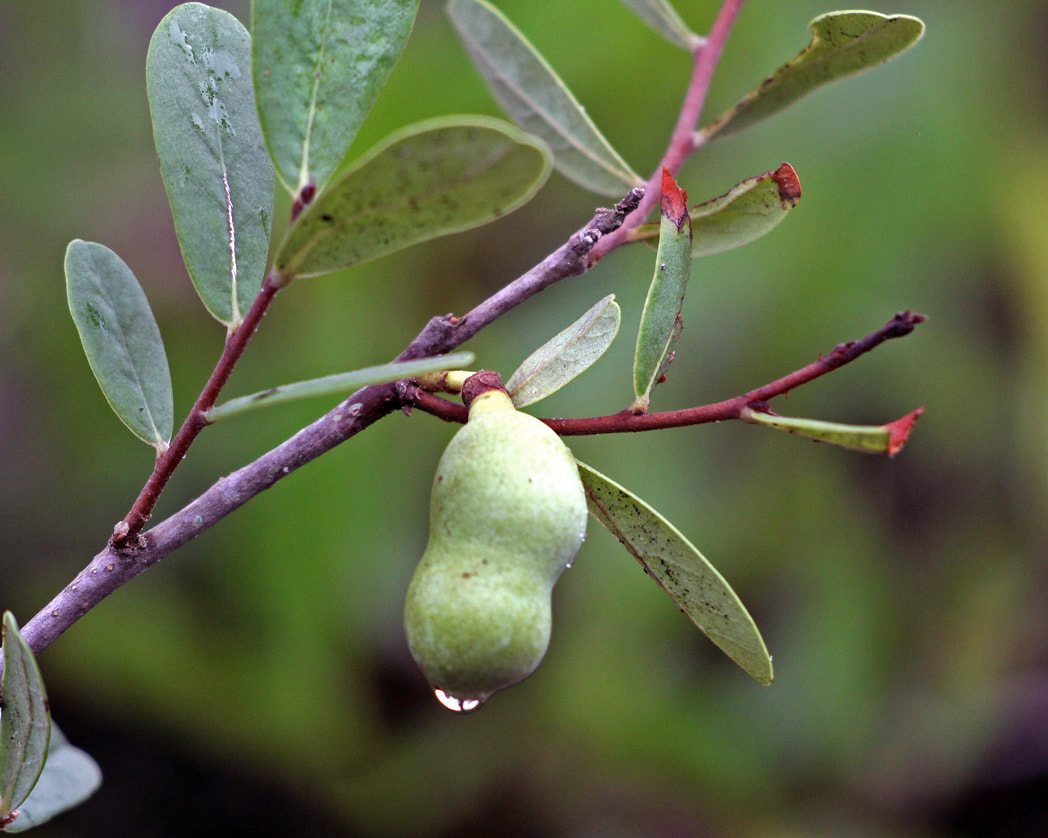Netted Pawpaw
Asimina reticulata
Asimina reticulata
One of my favorite plant families is Annonaceae, given its array of diversity is plant and fruit structure. A few months ago, I touched on Annona glabra, or Florida pond apple, which is often looked at as the Florida equivalent to the American pawpaw (Asimina trioloba). However, a closer relative of the American pawpaw that is found is Florida is Asimina reticulata, or the Netted pawpaw.
A. reticulata is a small perennial shrub that can be found throughout scrub habitats in Florida. It is essential to Gopher tortoise populations, as it is one of their favorite treats! The blooms occur from late winter to early spring and fruit follows shortly after. A. reticulata surprisingly pollinated by flies and beetles.
This species is small in stature, only reaching up to four feet. It is slender as well, with minimal branching. This can make specimens hard to spot in a field setting (they are not showy plants). Despite this, they are still important to the ecosystem.
A. reticulata may be available at local nurseries but pose a bit of a problem. Because of an elongated taproot, A. reticulata is susceptible to transplant shock. It is best to start this species from seed if you are interested in planting them on your property. From here, make sure to plant it in an area with acidic, sandy soil and lots of sun to ensure overall plant health. It is a lovely addition to encourage native wildlife on your property, as well as insects like the zebra swallowtail (Eurytides marcellus) and pawpaw sphinx (Dolba hyloeus).
By: Maya Frere
A. reticulata is a small perennial shrub that can be found throughout scrub habitats in Florida. It is essential to Gopher tortoise populations, as it is one of their favorite treats! The blooms occur from late winter to early spring and fruit follows shortly after. A. reticulata surprisingly pollinated by flies and beetles.
This species is small in stature, only reaching up to four feet. It is slender as well, with minimal branching. This can make specimens hard to spot in a field setting (they are not showy plants). Despite this, they are still important to the ecosystem.
A. reticulata may be available at local nurseries but pose a bit of a problem. Because of an elongated taproot, A. reticulata is susceptible to transplant shock. It is best to start this species from seed if you are interested in planting them on your property. From here, make sure to plant it in an area with acidic, sandy soil and lots of sun to ensure overall plant health. It is a lovely addition to encourage native wildlife on your property, as well as insects like the zebra swallowtail (Eurytides marcellus) and pawpaw sphinx (Dolba hyloeus).
By: Maya Frere

